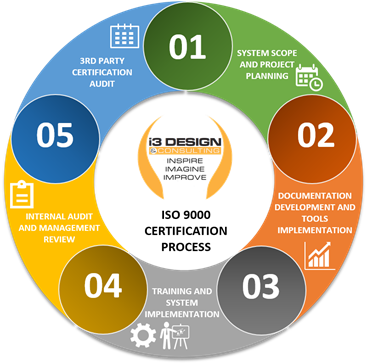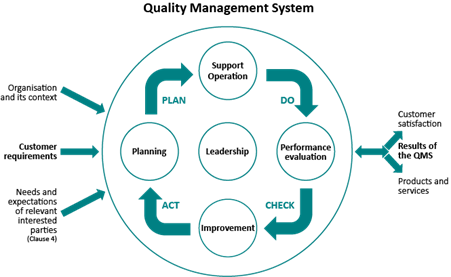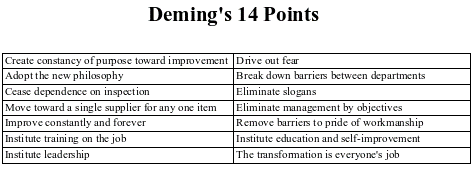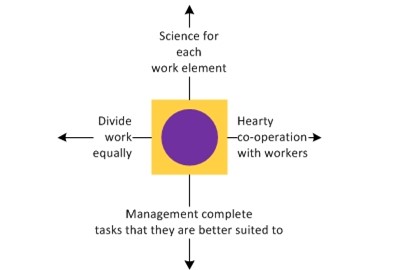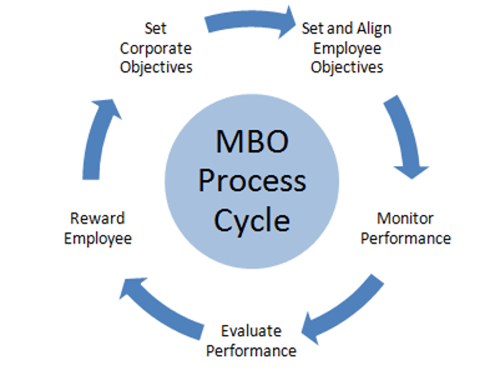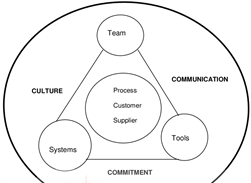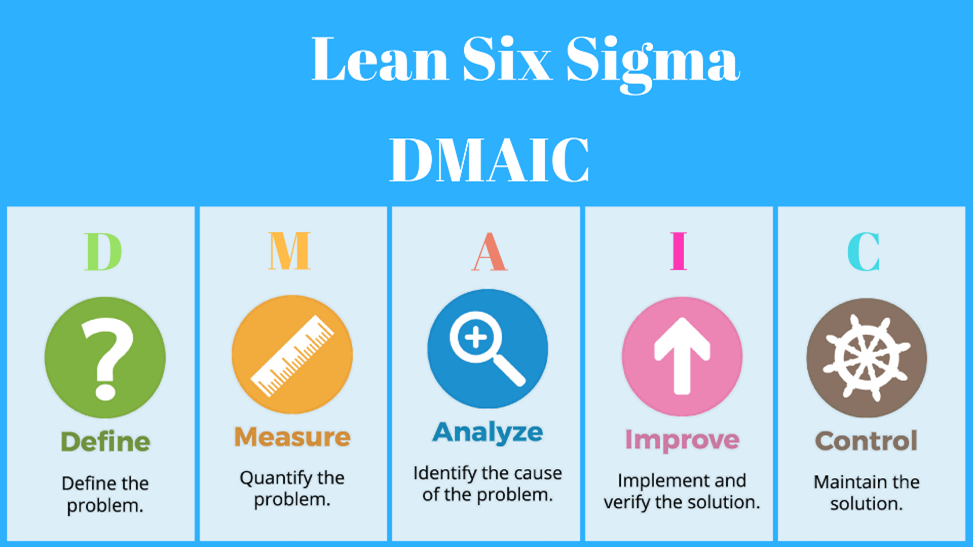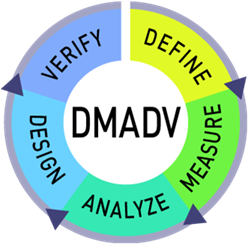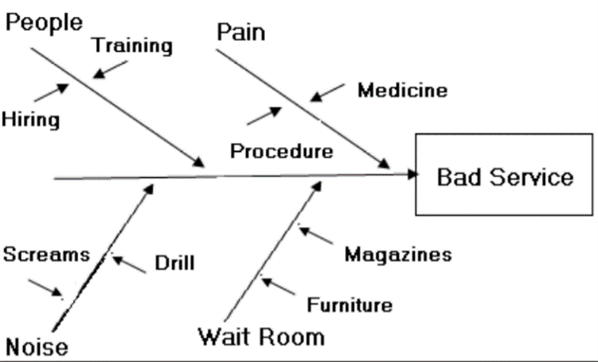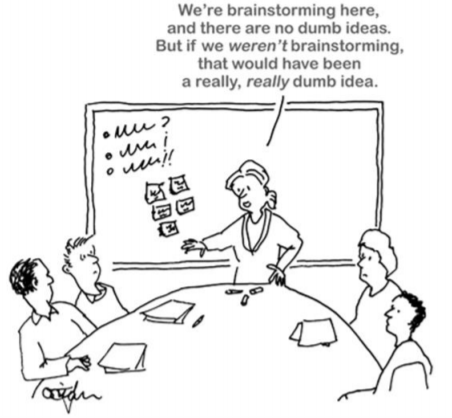Quality Management System
1. Introduction:
In the modern age, problems and challenges for the organisations around the globe have grown to a significant extent. Considering the extravagant growth in the arising challenges and complexities the need to develop and improve an organisation’s operations has become a necessity for organisations around the globe. Hence, the organisations have started to rely on the quality management system (further referred to as QMS) to improve its operations while complying to the diplomatic code implemented by the government (Teixeira et al., 2019). The current study aims at evaluating different dimensions of QMS and how it enables the organisations to meet implicit and explicit goals.
2. Basic Philosophy of QMS
The QMS system of the organisation can be defined as the cluster of policies and diplomatic code that enables the organisation to provide the best offerings to the customers. The QMS system of the organisation is made after the critical analysis of the market and consumer need, and the diplomatic code of the QMS system is set to meet the highest level of customer expectations (Nawai and Rahmat, 2019). Just like the organisation’s operations and offerings, the QMS system differs from organisation to organisation where the ultimate objective of the QMS is kept constant. In the modern age where organisations around the globe are striving to gain maximum benefits and a competitive edge over others, several organisational strategies affect the well-being of the country. To cope up and limit the growth of such activities, the ISO 9001 standard was devised (Fonseca, 2015). The ISO 9001 standard consists of certain rules, regulations and standards that govern an organisation to meet customer’s demand effectively without harming the well-being of the country. Following are some of the standards that were set by the ISO 9000, which governs an organisation to meet the customer needs effectively:
Source: (Fonseca, 2015)
PDCA cycle is abbreviated as the plan, do, action and act (Jagusiak-Kocik, 2017). The four-step model enables the organisation to deliver maximum quality without sacrificing the well-being of inhabitants. Following is the QMS model which comply with the ISO certification and enable the organisation to meet customer expectations (Díaz and Martínez-Mediano, 2018).
Source: (Díaz and Martínez-Mediano, 2018)
Edward Deming is considered a classic pioneer of QMS. Deming provided fourteen points that emphasise the importance of continuous development, team building, workplace variations and customer awareness. The fourteen principles of Deming are considered valuable in the organisation as it focusses on the key factors and enables the organisation to look upon the different dimensions of QMS (refer to figure 3 below) (Arraes et al., 2017).
Source: (Arraes et al., 2017)
Another pioneer which provided a detailed interpretation of the QMS system includes the Fredrick Taylor. Taylor provided a scientific review to the QMS system and provided a scientific insight on how the QMS strategies can be used within an organisation. The scientific management theory is of the view that the employee factors such as work segregation, management and pay roles should be given significant attention (refer to figure 4 below) (Su, 2017). By the theory provided by Taylor, it can be interpreted that the employee factors hold substantial importance in increasing the quality. Hence the organisations should focus on scientific factors to effectively comply with QMS. The findings of scientific theory strongly comply with the Toyota competitive edge (refer to figure 5 below). The factors tend to be the major reason why the organisation holds a strong competitive edge over others.
Source: (Su, 2017)
Peter Drucker is another pioneer whose theory of management by objectives got worldwide acceptance. The theory is a 6-step based model that focuses on the continuous improvement of management decisions and employee performance (refer to figure 6 below) (Islami et al., 2018). Management by objective emphasises that proper evaluation and measurement system should be promoted to improve quality. The theory contributes heavily to the organisation’s success as it sheds light on various management factors.
Source: (Islami et al., 2018)
3. Quality Improvement Tools:
3.1 Total Quality Management:
In the debate of the organisation’s growth and strategies used by the organisations to boost the sales, the total quality management (further referred to as TQM) holds substantial importance. TQM is a cluster of different rules that focus on providing the maximum value to customers (Aquilani et al., 2017). The TQM system emphasises that the organisations around the globe should focus on the production of quality services or products. Considering its ability to explore different dimensions, the TQM process got worldwide acceptance and is being used in different industries, including production and service industries.
Source: (Aquilani et al., 2017)
3.2 Six Sigma Approach:
Six Sigma methodology or approach has also become a central area of focus where organisations around the globe are heavily relying on the six-sigma strategy. Six-sigma is a statistical dependent approach which is designed to cope up with the unique problems (Mathiyazhagan and Sharma, 2020). The six-sigma approach is further divided into two processes, named as DMAIC and DMADV methods (Sirshar et al., 2019). The DMAIC process is used where the current processes of the organisation fail to operate and deliver the expected results (refer to figure 7 below). Whereas the DMADV process focuses on the innovation of new processes (refer to figure 8 below).
Source: (Sirshar et al., 2019)
Source: (Deshpande, 2016)
3.3 Benchmarking:
Benchmarking is another tool used by organisations to improve the quality to a significant extent. The benchmarking tests require an individual to analyse the organisation first critically and then comparing the obtained information with the industrial leaders (Duan et al., 2016). By critically comparing and contrasting, the organisations identify some major areas of improvements. Although benchmarking is an important tool used by the organisations, the process is time-consuming, which hinders productivity.
3.4 Fishbone Method:
Fishbone method is another essential tool used by the organisations to get a critical insight into the problem. Fishbone method is also known as the cause and effect method where the organisation analyses the results of different decisions (refer to figure 9 below) (Huylebrouck, 2017). The results obtained from a proper analysis enable the organisation to identify which actions should be avoided and which actions should be taken by the employees at different stages.
Source: (Huylebrouck, 2017)
3.5 Brainstorming:
Brainstorming is the traditional way to produce different ideas and getting a critical insight into the employee perspective. Brainstorming is the organisational practice where the management of the organisation requires different people to propose different ideas (refer to figure 9) (Paulus and Kenworthy, 2019). The process of brainstorming can either be used to develop a new strategy, or it can be used to get the problem resolution system. Considering its ability to produce adequate information, the process of brainstorming has got worldwide acceptance as it generates useful information for the organisation.
Source: (Paulus and Kenworthy, 2019)
4. ISO 9001 Standards:
In the modern age, the factors that affect the well-being of people has grown to a significant extent. The organisations around the globe are using different strategies to gain maximum market share where some organisations such as Volkswagen tend to hurt the well-being of inhabitants. The issue where the Volkswagen used defeat devices to reduce the emission of hazardous substances is the major thing to consider (Contag et al., 2017). To cope up with such issues, there are certain standards set by ISO 9001 (ISO, 2020). Following are the major clauses of ISO 9001:2015:
- The major emphasis of the ISO 9001 is to focus on the product standardisation. The clause states that the organisations wanting to maintain the quality must focus on the constant value generation process. The production or offerings of the organisation must produce the output which is beneficial for the customer base
- Another clause of the ISO 9001:2015 was the policy update. According to the clause, the organisation must carry out a detailed internal and external analysis. The ISO 9001:2015 further stated that the organisation should carry out different interviews with the staff, management, stakeholders and customers to identify the areas of improvements
- The management of the organisation must ensure that the things are being planned effectively and employees are working to produce high-quality commodities
- The ISO 9001:2015 focuses on the proper training and development of employees. According to the certification, proper training and development are the key factors that promote quality. Hence, the organisation is liable to conduct different training sessions.
- Another factor that has been emphasised by the ISO 9001:2015 is the proper communication and evaluation system. Both of these factors contribute heavily to an organisation’s success. Hence, the certification binds the organisation with communication and evaluation system.
4.1 Evaluation of Application:
The clauses outlined by the ISO 9001:2015 are vast, therefore applicable to almost every organisation. The standards set by the certification contribute significantly to the organisation’s effective quality management system. Atop discussion sheds light on some of the most crucial factors of the QMS of the organisation (UCLAN .n.d). Value generation system of the organisation is the most fundamental factor of the QMS as it allows the organisation to get the lion’s share of the market. Other core factors that were focused by the certification includes the proper training & development, communication and appropriate evaluation system. The certification is of the view that the communication, evaluation and performance are the core factors that enable the organisation to build a robust QMS system. If focused correctly, the elements tend to bring fruitful results for the organisation. Hence, different clauses contribute heavily to the effective QMS system (Wilson and Campbell, 2016). Apart from guiding the organisations on the factors to focus upon the certification also highlights the importance of internal and external analysis of the organisation. The clauses outlined above emphasise that the organisations should carry out frequent interviews with stakeholders at the same time, analysing the external factors. As the factors enable the organisation to get an effective QMS system.
5. ISO 9001:2015 Certification:
The ISO 9001:2015 certification does not provide direct certifications to the organisations. Instead, the organisation holds third parties that analyse the organisations and issues the certification on ISO 9001:2015’s behalf. The certification issued by the third parties is recognised worldwide. The third parties differ from country to country. Almost every country has formed its third party, which is credible of issuing certificates to the organisations. In the UK, the third party operates by the name of United Kingdom Accreditation Service (UKAS). The UKAS analyses different organisations critically (Emerson, 2019). UKAS analyses various organisations concerning the provided clauses in ISO 9001:2015. The organisation which is being invested has to bear the investigation fee. The UKAS analyses whether or not the organisation is coping up to the provided guidelines of ISO 9001:2015. When the organisation fails to comply with the rules and regulations that were set by the certification, the investigation gets cancel. The organisation has to remake the operations plan or organisational strategy. Afterwards, the program is presented to the third parties for approval. After critically analysing various factors and the rules and regulations set by the ISO 9001:2015, the organisation decide whether or not to give the letter of certification to the organisation (Kohl, 2020). After the certification approval, the organisation becomes ISO 9001:2015 certified organisation, which means the organisation is coping up with the provided rules and regulations. The certification provided by the third parties is not forever; the organisation has to renew the ISO certification after different intervals. In this era of increased problems, the organisations around the globe are using different strategies and the problem generation ha grown to a significant extent. Hence, the ISO 9001:2015 aims at providing a particular certification to the organisations. The third parties that are selected by the organisations are also liable to cope up with the provided rules and regulations. As the third parties vary from country to country, there is a reliable communication system that guides external parties about a specific ISO certification (Castka and Balzarova, 2018). Through a proper data store and up-gradation function, the organisations inform external parties about the issuance of the certification. Hence, different parties determine which organisations hold ISO certification and which organisations do not have the certification.
6. Management of Product Recall:
A product recall is called when the organisation fails to cope up with the quality requirements implemented by the government of the particular industry. Considering the modern age problems, the governments have become aware of the challenges and hence provide organisations with different acts which can be used to control product recall. The Consumer Product Safety Act enables an agency named as CSPC to ban the organisation which fails to cope up with the rules and regulations (Nottage, 2018). Hence the organisations should focus on the QMS and the rules and regulations provided by the CSPC. By focusing on these factors, organisations can reduce product recall.
7. Conclusion:
After critically analysing various factors, the study concludes that the QMS system is of significant importance for the organisations as it allows the organisation to gain maximum benefits by delivering high-quality services to the customers. There are several tools such as brainstorming, TQM, fishbone method and six-sigma approaches are available that contributes to the organisation’s success. Furthermore, ISO 9001:2015 provides critical insight into how such issues can be resolved. Hence, organisations should focus on these factors to improve and grow densely.
Also look at some of our business services
– Business Essay Writing Service
– Business Dissertation Writing Services
– Business Report Writing
– Business Assignment Help
– Business Planning Writing Service
– Business Assignment Writing Service





